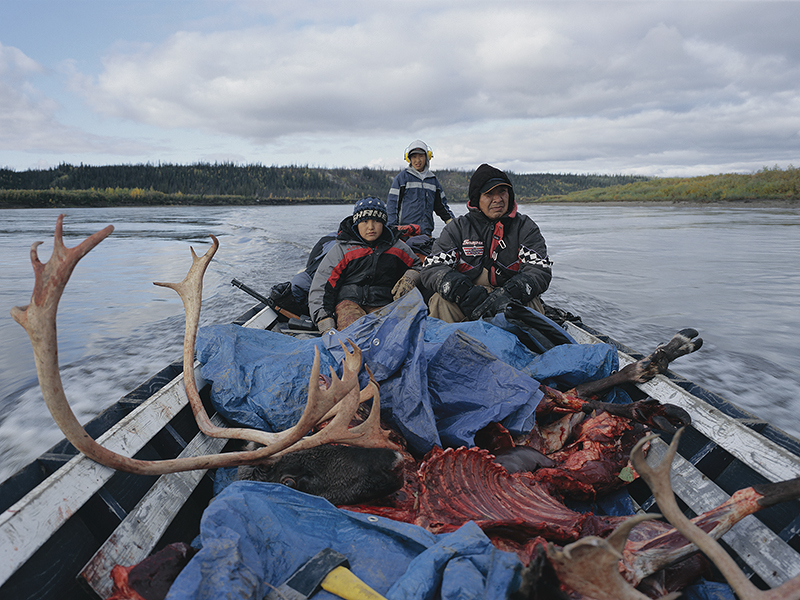
Caribou Hunt—Joe Tetlichi, Jamie and Shane | Oil and the Caribou | 2006 | 18 in. x 24 in.
Early September 2006, Porcupine River, Yukon Territory, Canada. Gwich’in conservationist Joe Tetlichi, former chair of the Porcupine Caribou Management Board, his son Jamie and nephew Shane, are returning to Old Crow with caribou meat. Fifteen Gwich’in villages, in Alaska in the United States and the Yukon and Northwest Territories in Canada, depend on the Porcupine River caribou herd for subsistence food. Moreover, their cultural and spiritual identities are inextricably linked to the caribou. The Gwich’in Nation oppose oil development in the coastal plain of the Arctic National Wildlife Refuge, the calving ground of the caribou. In my essay in the Third Text journal special issue, “Contemporary Art and the Politics of Ecology,” I wrote: The Gwich’in call the caribou calving ground ‘IIzhik Gwats’an Gwandaii Goodlit’ (‘The sacred place where life begins’). However, the coastal plain is not part of the Gwich’in traditional homeland. Instead, it is the traditional homeland of the Iñupiat. The Gwich’in do not inhabit the coastal plain, they do not go there to hunt, they do not even walk there, and yet they are making a claim for its protection. For all these reasons, I would call this a right–to–food claim; by making this claim they are fighting to protect access to food for human and non–human communities—caribou for the Gwich’in, and cotton grass for the caribou, during calving time.